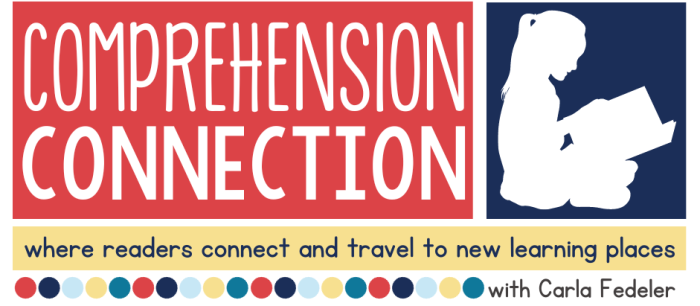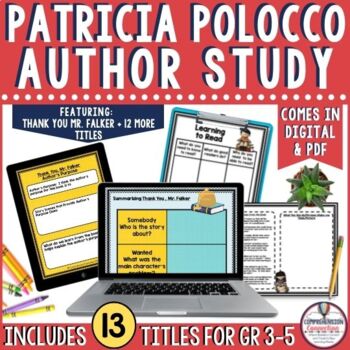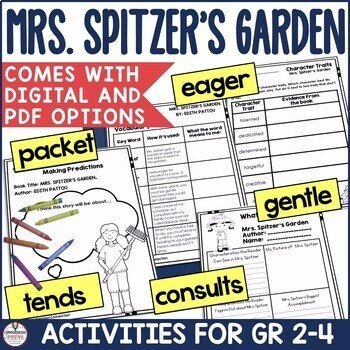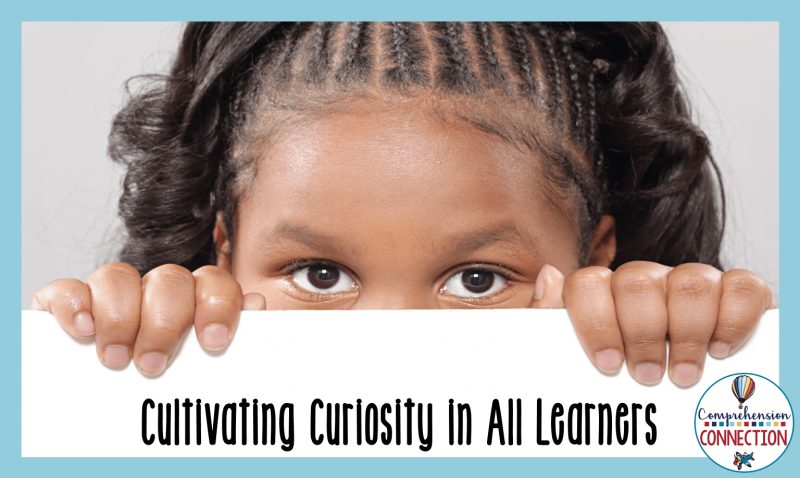Do you struggle with getting all of your content in during the day and feel like you have no time for read alouds? It sure was a struggle for me at times, and although I KNOW how important read alouds are, I often had to make choices sometimes on whether to get in that last reading group or read the next chapter in our class book. This post is about how you can do both and why it’s so important that your student hear you reading great literature to them.

So, readers, I have a task for you. Grab a piece of paper, and take a moment to brainstorm a list of books you remember from reading as a child. Now, rank them in your order of preference. Did you have trouble coming up with a list? I bet you didn’t. Have you done this with your students? Do you think they’d quickly jot down names, or do you think some would struggle? Here’s the deal…
Every child should “know” great children’s authors.
Sadly, many of our children are missing out on truly “knowing” the greats. We are often pressed for time and if something has to be removed from the schedule, some teachers choose the read aloud time. (Gasp!) Today, I’m going to share with you ways that you can weave in great literature into your lessons without losing one ..bit…of…time. Ready? Well, here we go…
Use read alouds to model reading skills.
Many read alouds are rich with Tier 2 vocabulary which our students need, and if you’re teaching reading skills such as character traits or character development, why not use authentic literature like Strega Nona or Thunder Cake to demonstrate. Have you read Lilly’s Purple Plastic Purse? At the second grade level, it’s a hit, but again…filled with meaty vocabulary. Authentic literature read using Think Aloud shows students how to think as readers when they’re reading these books on their own.
Tie your writing assignments to your read alouds
Have you ever noticed that your strongest readers are typically your strongest writers? Reading and writing go hand-in-hand, and the best way to learn to be a great writer is to read great writing. When you choose books as your model, remember you do not need to read the full book each time. Sometimes using just the opening pages to model how to hook your reader is what you may need, or you might select examples of persuasion for when you write a persuasive paper. (Example-How to Babysit a Grandpa or My Lucky Day.)
Read alouds relax students and help them transition after high energy activities.
After PE or recess, kids need to transition back to the classroom mindset. They may have frustrations from the playground or may be too hyped up to focus. Reading a great book calms the mind. Have students practice making predictions and visualizing as you read. Pause for discussion after you’ve read a bit. Want to add extra interest? Let the group vote on the books you read to them. For this reading experience, chapter books may be preferred, but do not write off picture books. VanAllsburg, Polacco, Rylant, and DePaola are all great options for upper elementary.
Read alouds model fluency.
Children who hear fluent reading will copy it when they read on their own. When you read aloud to your students, use this time to discuss the five P’s of fluency (prosody, punctuation, phrasing, performance, pace). Here is a little freebie you can use with your kids to discuss as you read. It can be projected or provided to students for their reading notebooks.

Read alouds can introduce students to new experiences with different genres AND the thinking that goes with each.
Students tend to read primarily fiction, but by using a variety of genres when you are choosing read alouds, you expose your students to new options. One reason this is a must is that students USE primarily nonfiction in their learning. Additionally, our standards require us to teach students comprehension strategies with folktales, myths, historical fiction, biographies, and more. You can model text structures with these types of read alouds.
By this point, you are likely thinking of the many other reasons to make time for read alouds, and I hope you can come up with many others. Yes, selecting what to share takes time, but you can start with exploring Good Reads, Amazon, and Pinterest of course, and by all means, talk to your librarian. I have been lucky to work with two very knowledgeable librarians in my career who knew books, and if they couldn’t come up with what I needed, they knew where to look. That’s huge!
Mrs. Spitzer’s Garden is a wonderful teacher book, and with the unit I made, I included comprehension skills you can model with the book. The book units in my store are all set up with a focus on comprehension, and remember, picture books are not limited to primary grades alone. Patricia Polacco, Jan Brett, Mem Fox, and Cynthia Rylant are authors with much to offer students in upper elementary.
other posts you may like:
- 5 ESSENTIAL TIPS FOR TEACHING WITH READ ALOUDS
- 5 WAYS TO USE INTERACTIVE READ ALOUDS FOR EFFECTIVE SKILL MODELING

resources featured in this post:
-
Sale Product on salePatricia Polacco Author Study Book Companions Literacy Activities
$67.87Original price was: $67.87.$38.00Current price is: $38.00. -
Sale Product on saleJan Brett Author Study Book Companion Guides Winter Literacy Bundle
$58.40Original price was: $58.40.$34.99Current price is: $34.99. -
Sale Product on saleCynthia Rylant Fall Literacy Book Study Bundle with Activities for 10 Titles
$51.92Original price was: $51.92.$27.00Current price is: $27.00. -
Mrs. Spitzer’s Garden Comprehension Activities$4.50


















